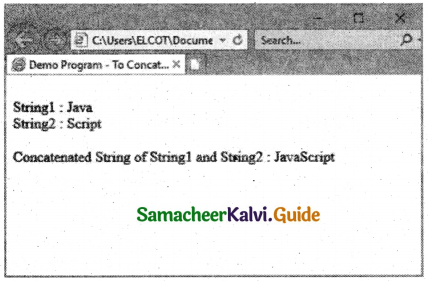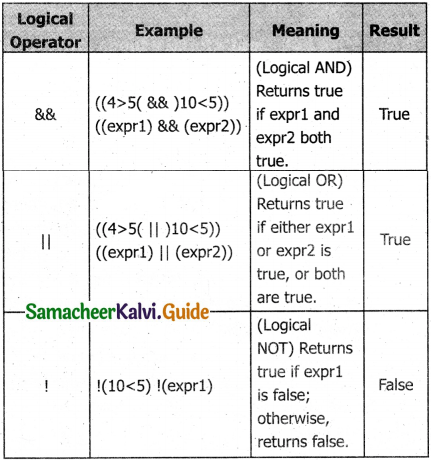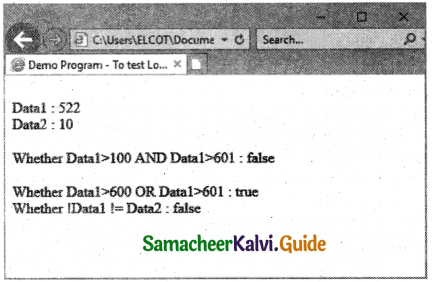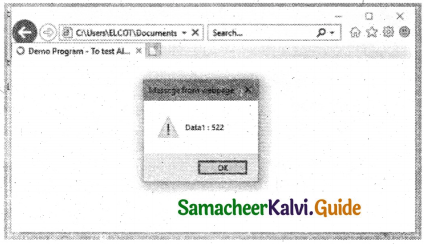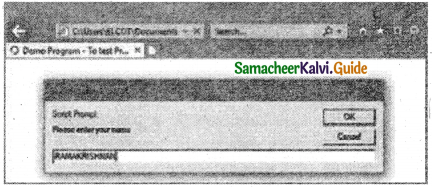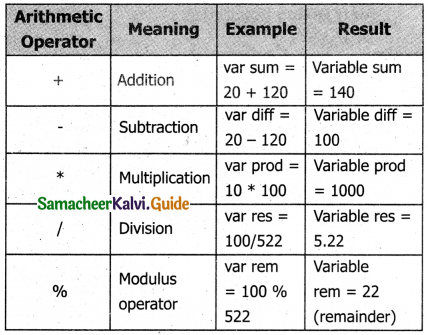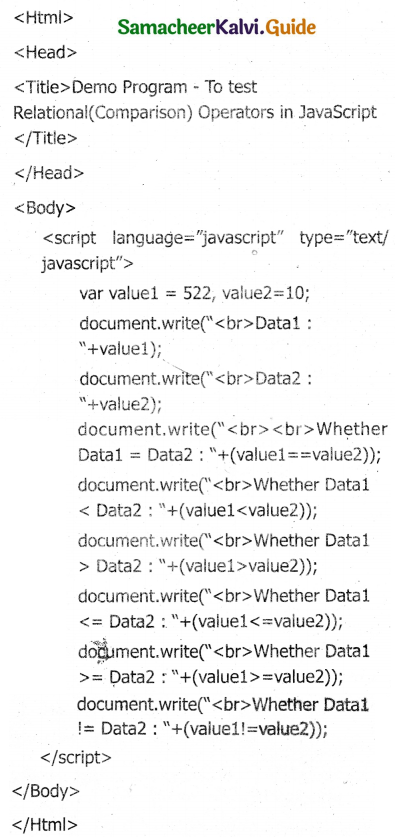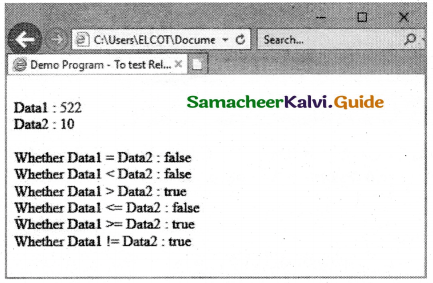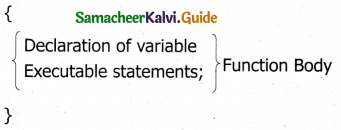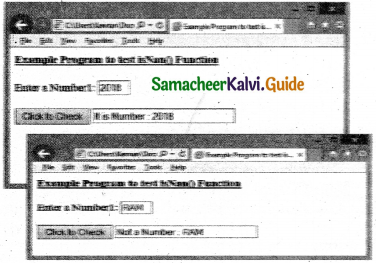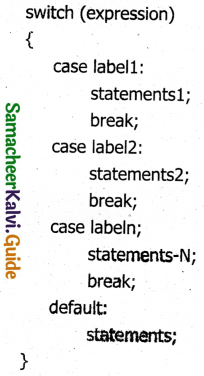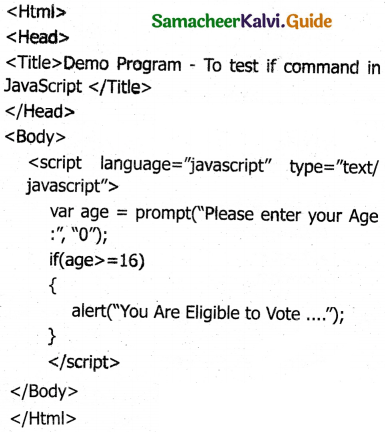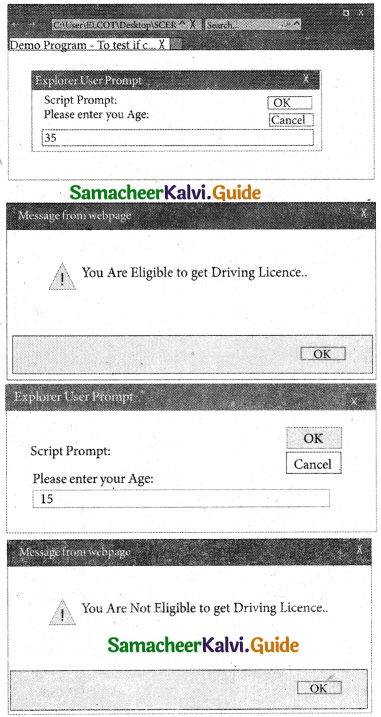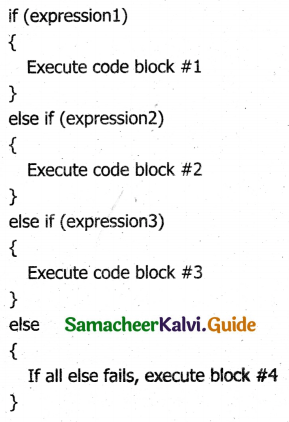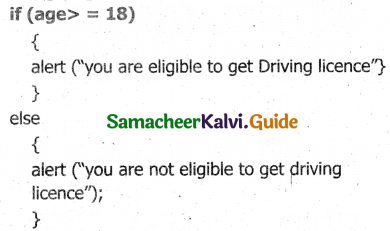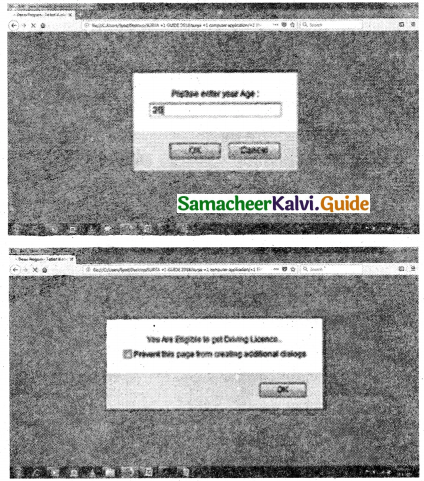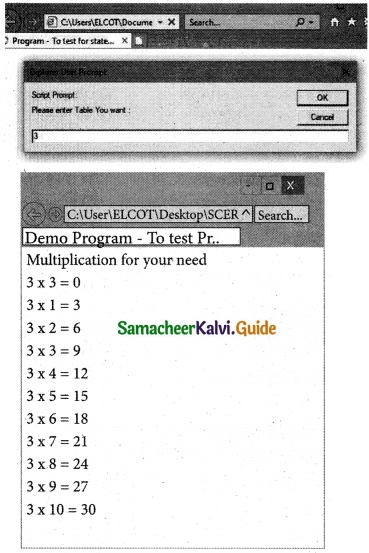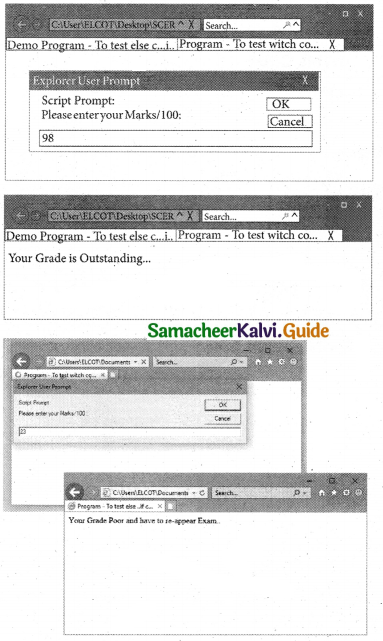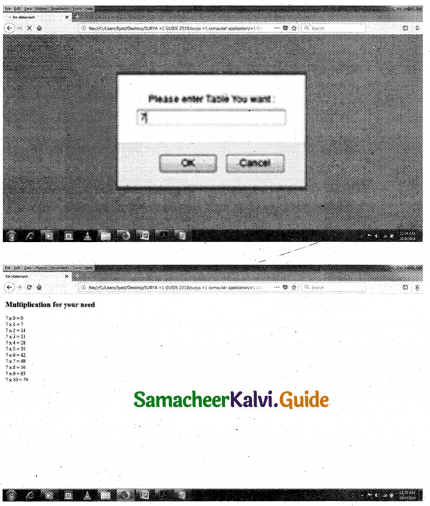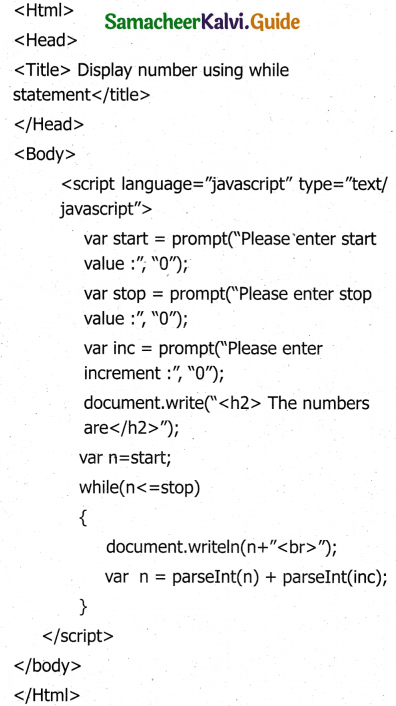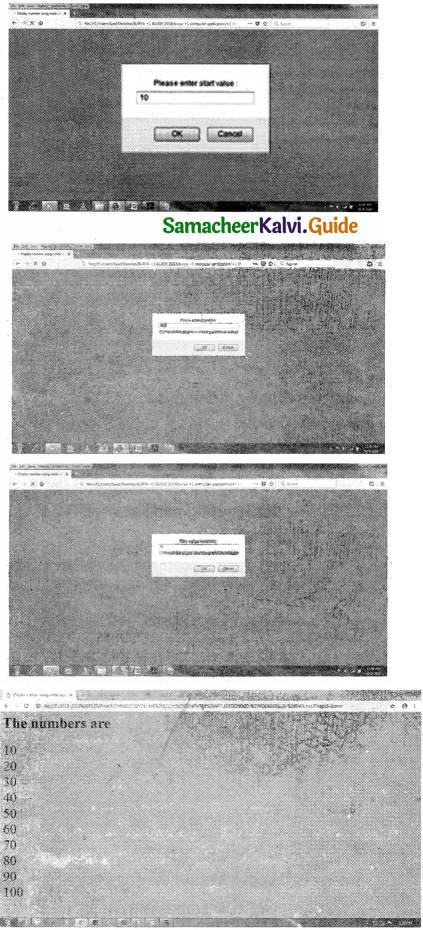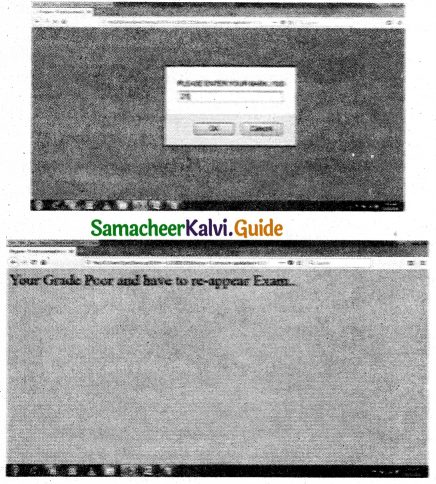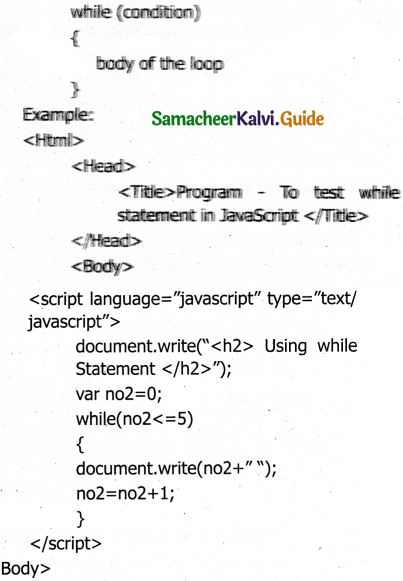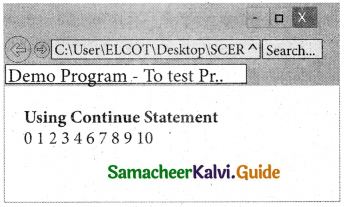Tamilnadu State Board New Syllabus Samacheer Kalvi 11th Maths Guide Pdf Chapter 2 Basic Algebra Ex 2.5 Text Book Back Questions and Answers, Notes.
Tamilnadu Samacheer Kalvi 11th Maths Solutions Chapter 2 Basic Algebra Ex 2.5
Question 1.
Solve 2x2 + x – 15 ≤ 0
Answer:
The given inequality is
2x2 + x – 15 ≤ 0 ——— (1)
2x2 + x – 15 = 2x2 + 6x – 5x – 15
= 2x (x + 3) – 5 (x + 3)
= (2x – 5)(x + 3)
2x2 + x – 15 = 2\(\left(x-\frac{5}{2}\right)\))(x + 3) ——— (2)
The critical numbers are x – \(\frac{5}{2}\) = 0 or x + 3 = 0
The critical numbers are x = \(\frac{5}{2}\) or x = – 3
Divide the number line into three intervals

![]()
(i) (- ∞, – 3)
When x < – 3 say x = – 4
The factor x – \(\frac{5}{2}\) = – 4 – \(\frac{5}{2}\) < 0 and
x + 3 = – 4 + 3 = – 1 < 0
x – \(\frac{5}{2}\) < 0 and x + 3 < 0
⇒ \(\left(x-\frac{5}{2}\right)\) (x + 3) > 0
Using equation (2) 2x2 + x – 15 > 0
∴ 2x2 + x – 15 ≤ 0 is not true in (- ∞, – 3)
(ii) \(\left(-3, \frac{5}{2}\right)\)
When – 3 < x < \(\frac{5}{2}\) say x = 0
The factor x – \(\frac{5}{2}\) = 0 – \(\frac{5}{2}\) = – \(\frac{5}{2}\) < 0 and
x + 3 = 0 + 3 = 3 > 0
x – \(\frac{5}{2}\) < 0 and x + 3 > 0
⇒ \(\left(x-\frac{5}{2}\right)\) (x + 3) < 0
using equation (2) 2x2 + x – 15 < 0
∴ 2x2 + x – 15 ≤ 0 is true in \(\left(-3, \frac{5}{2}\right)\)
![]()
(iii) \(\left(\frac{5}{2}, \infty\right)\)
When x > \(\frac{5}{2}\) say x = 3
The factor x – \(\frac{5}{2}\) = 3 – \(\frac{5}{2}\) > 0 and
x + 3 = 3 + 3 > 0
x – \(\frac{5}{2}\) > 0 and x + 3 > 0
= \(\left(x-\frac{5}{2}\right)\) (x + 3) > 0
Using equation (2) 2x2 + x – 15 > 0
∴ 2x2 + x – 15 ≤ 0 is not true in \(\left(\frac{5}{2}, \infty\right)\)

We have proved the inequality 2x2 + x – 15 ≤ 0 is true in the interval \(\left(-3, \frac{5}{2}\right)\)
But it is not true in the interval

![]()
Inequality solver that solves an inequality with the details of the calculation: linear inequality, quadratic inequality.
Question 2.
Solve x2 + 3x – 2 ≥ 0
Answer:
The given inequality is
– x2 + 3x – 2 ≥ 0
x2 – 3x + 2 < 0 ——– (1)
x2 – 3x + 2 = x2 – 2x – x + 2
= x(x – 2) – 1(x – 2)
x2 – 3x + 2 = (x – 1) (x – 2) ——— (2)
The critical numbers are
x – 1 = 0 or x – 2 = 0
The critical numbers are
x = 1 or x = 2
Divide the number line into three intervals
(- ∞, 1), (1, 2) and (2, ∞).

(i) (- ∞, 1)
When x < 1 say x = 0
The factor x – 1 = 0 – 1 = – 1 < 0 and
x – 2 = 0 – 2 = – 2 < 0
x – 1 < 0 and x – 2 < 0
⇒ (x – 1)(x – 2) > 0
Using equation (2) x2 – 3x + 2 > 0
∴ The inequality x2 – 3x + 2 ≤ 0 is not true in the interval (- ∞, 1 )
![]()
(ii) (1, 2)
When x lies between 1 and 2 say x = \(\frac{3}{2}\)
The factor x – 1 = \(\frac{3}{2}\) – 1 = \(\frac{1}{2}\) > 0 and
x – 2 = \(\frac{3}{2}\) – 2 = – \(\frac{1}{2}\) – < 0
x – 1 > 0 and x – 2 < 0
⇒ (x – 1)(x – 2) < 0
Using equation (2) x2 – 3x + 2 < 0
∴ The inequality x2 – 3x + 2 ≤ 0 is true in the interval (1, 2 )
![]()
(iii) (2, ∞)
When x > 2 say x = 3
The factor x – 1 = 3 – 1 = 2 > 0 and
x – 2 = 3 – 2 = 1 > 0
x – 1 > 0 and x – 2 > 0
= (x – 1)(x – 2) > 0
Using equation (2) x2 – 3x + 2 > 0
∴ The inequality x2 – 3x + 2 ≤ 0 is not true in the interval (2, ∞)
We have proved the inequality x2 – 3x + 2 ≤ 0 is true in the interval [ 1, 2 ].
But it is not true in the interval
(- ∞, 1) and (2, ∞)
∴ The solution set is [1, 2]
![]()











































































